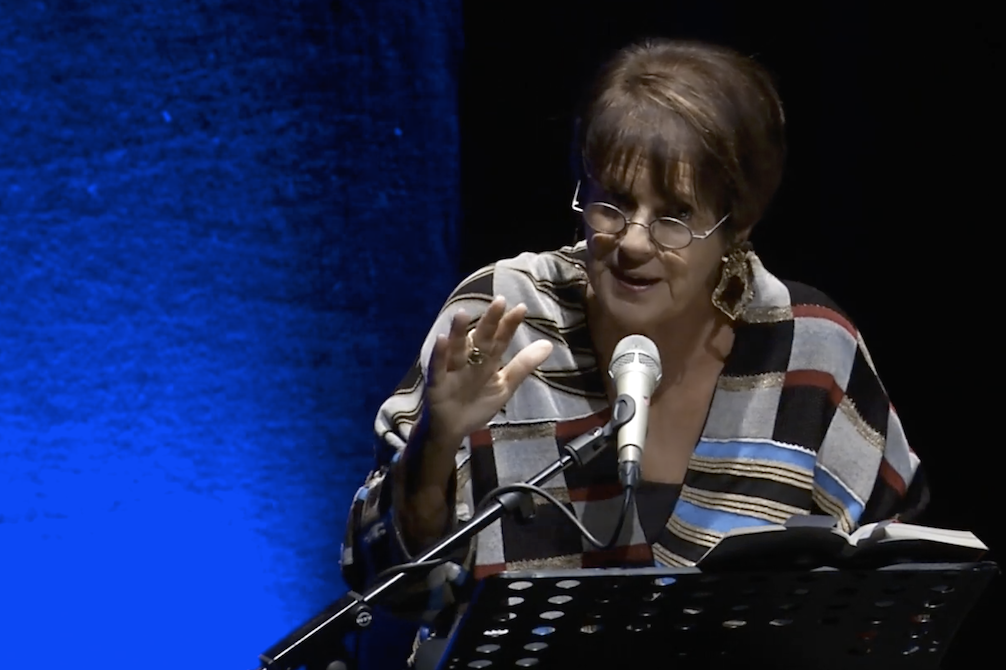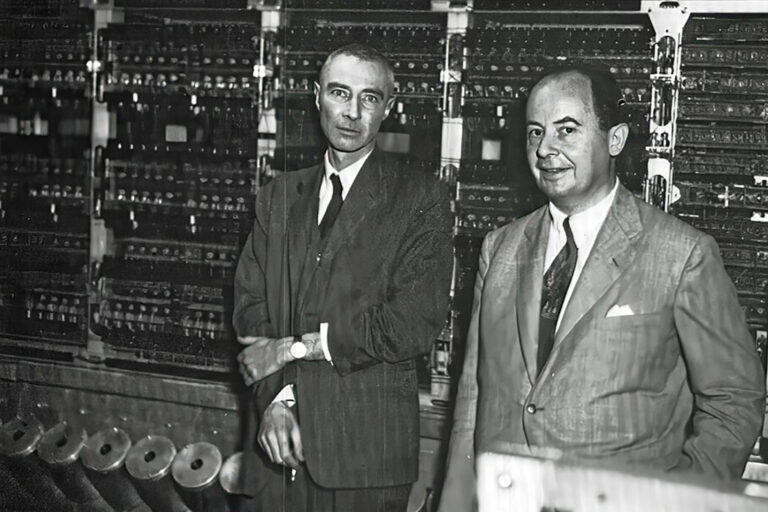“It was enough for me to realise that space was made in this way to realise that there were certain soft and welcoming pockets like hammocks in which I could find myself joined with Ursula H’x and swing with her, biting each other all over the person. The properties of space, in fact, were such that one parallel took to one side and the other took to another […] until suddenly our two trajectories resumed their rectilinear path and each continued on its own as if nothing had happened.”
[Italo Calvino, The Cosmicomics – The shape of space].
When Borges, in The Aleph (see Augmented Reality), uses the adjective “inconceivable” for the universe, he encompasses in a single word the elusive ideas of cosmic dimensions and distances, of complexity and completeness with respect to the reality of terrestrial phenomena we are familiar with. But the word inconceivable also contains a hint of paradox, of foreignness with respect to the ordinary, of a breaking of the mould. It is a dimension that crosses, barely touching, the accepted and acknowledged order. And this is something that makes Borges’ “inconceivable” somewhat akin to the term comic used by Calvino to describe the cosmos in the Cosmicomics.
PARALLELS
The main character in all the cosmicomics is Qfwfq who, as described by Calvino himself, “is the age of the universe” but “is not necessarily a man (he may have become one since man has existed; but for billions of years he is but, we could say, potential)“. In his wanderings through space since the Big Bang, Qfwfq finds himself involved in all the most important phases of the universe’s evolution. And from his position of absolute privilege, he has the opportunity (and the time) to reflect on the structure and mechanisms of the cosmos.
In the cosmicomic “The shape of space” all the characters, free in space but sufficiently close to some celestial object, find themselves “falling” at the same speed along parallel lines. If our condition as inhabitants of the Earth prevents us from accepting that two parallel lines can meet, for Qfwfq things are different. Since he is not a human being in the most common sense of the word, he is allowed to notice that the lines are, indeed, straight, but intertwined like the ink lines of an italic text. The sudden realisation gives Qfwfq the opportunity to overlap the line of his beloved, Ursula H’x, and seclude himself with her in a pocket of space, if only for a moment.
Speaking of space, the scientific framework of this story, exactly as the introduction to Cosmicomics itself anticipates, is Einstein’s General theory of relativity.
GEODETIC LINES
But let us start with geometry. Because Einstein’s Relativity is an interesting case of a revolution in physics anticipated by cognitive leaps in mathematics. Euclid’s fifth postulate, one of the five postulates of geometry that describes with excellent approximation the reality in which we are immersed, is called the “parallel postulate”. We probably all remember its content, at least in its simplest formulation: for a point P outside a straight line r a single parallel to r passes. This is a fairly intuitive fact. And in fact, the term postulate indicates a primary statement, not inferred from others, given as true because it cannot be proved and, in general, it is so unquestionable that it requires no further justification.
However, the context must be clarified. The Euclidean geometry that we study in school is the geometry of “flat” three-dimensional space, whose primitive entities are the plane, the line, and the point. If we wanted to translate the same geometry from the plane to a curved surface, a sphere for example, we would immediately realise that the fifth postulate no longer holds. We cannot construct parallel lines on a sphere. Actually, we cannot construct straight lines on a sphere at all, but only circles, “geodesic lines”. The shortest path between two points, which on the plane is a segment, on a sphere is an arc of a circle, whose extension to infinity is, precisely, a circle (the maximum circle or, in three-dimensional space, the “geodetic line”).
FROM EUCLID TO EINSTEIN
From 300 BC to the early decades of the 19th century, the fifth postulate haunted the nights of philosophers and scientists. It seemed to stand out from the first four because of its form, which was more like a provable statement, a theorem. Euclid himself was not convinced that it was really a postulate, and that it could not be proved starting from the first four. And it was precisely this doubt that made the fifth postulate an object of desire for scientists and philosophers for several centuries, a mysterious bearer of visions of geometries and exotic universes. Although no one dares to question the validity of the fifth postulate based on everyday experience alone, the very existence of non-Euclidean geometry is based on its negation.
That the fifth postulate may be falsified is a breakthrough for mathematics. It implies that Euclidean geometry is not the only geometry and that the universe does not have the shape that is most plausible for us. Einstein’s extraordinary vision is that light rays in space do not travel along straight lines, but are deflected by the presence of celestial bodies. In this description, gravity is not a force acting at a distance between bodies, but the effect of the deformation of space caused by the mass of the bodies themselves. We can imagine this curvature as the hollow caused by a marble on a suspended cloth, and gravity as the effect this curvature would have if we put a second marble on the cloth.
COMIC COSMOS
What is comic about this rather disorienting description of the structure of the cosmos? For Calvino, “Comic” has a meaning that goes far beyond the immediate bewilderment in beholding weirdness: “In primitive man and in the classics, the comic sense was the most natural attitude; we, on the other hand, need a screen, a filter, to deal with things that are too big, and this is the function of the comic” (Calvino, introduction to Cosmicomics, Il Caffè, 1964). Calvino uses the scientific topic to generate images that solicit an unprecedented mixture of human behaviour, that is comic in that it is distant from the most common experience, foreign to the canons of routine. It is somewhat different from what usually happens in science fiction that pushes imaginary premises to their extreme consequences.
THE WITNESS
This difference in the use of paradoxical scientific construction takes us from Calvino’s “comic” science to the science fiction of an illustrious predecessor: George Wells. Marking the continuity of this handover is the same “wrong” geometry of space that has brought us this far, with the addition of one ingredient: time. After all, haven’t we all wondered whether or not it is possible to travel through time?
“The geometry […] that you learned at school is founded on a misconception […]. You know, of course, that a mathematical line, a line of thickness nil, has no real existence. […] Neither has a mathematical plane. These things are mere abstractions. […] Can a cube that does not last for any time at all, have a real existence? Clearly,– the Time Traveller proceeded[…], – any real body must have extension in four directions: it must have Length, Breadth, Thickness, and….Duration. […] There are really four dimensions, three which we call the three planes of Space, and a fourth, Time. […] there is no difference between time and any of the three dimensions of space […] why should he not hope that ultimately he may be able to stop or accelerate his drift along the Time-Dimension, or even turn about and travel the other way?”
[George Wells, The Time Machine]
Lella Costa’s reading of the short story “The Shape of Space” by Italo Calvino accompanied the event organised by INFN, “Space, time, gravity. Dialogo semiserio sull’universo” [A semi-serious dialogue on the universe]. The stars of the event were the physicists Marica Branchesi, Fernando Ferroni and Antonio Zoccoli. The dialogue alternates readings by Lella Costa, music by pianist Umberto Petrin, and visual narration by illustrator Luca Ralli. The event, hosted by David Riondino, was held in Genoa, at the Teatro della Tosse, as part of the Festival della Scienza [Science Festival], on 31 October 2017, and its content is a journey through the ideas of space, time and gravity, particles, gravitational waves and cosmic sources, and the most recent discoveries in particle physics.
“Staffetta letteraria, tra scienza e narrativa” (Literary Relay, between Science and Fiction) is a regular editorial of Collisioni.infn dedicated to the authors who since 2011 have contributed to the scientific story of the conference-shows organised by INFN by means of extracts from their literary works.



